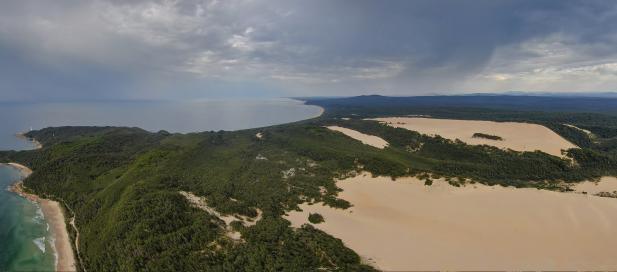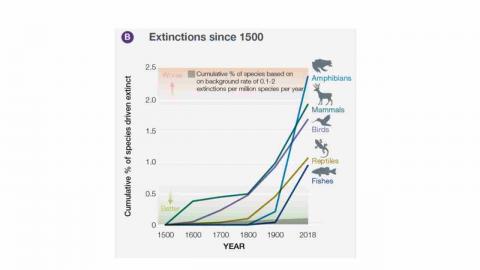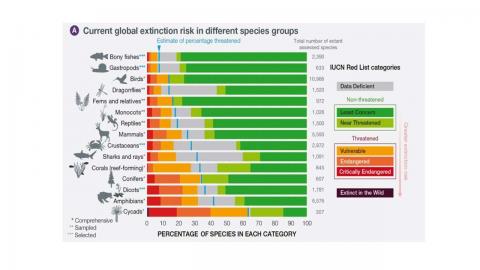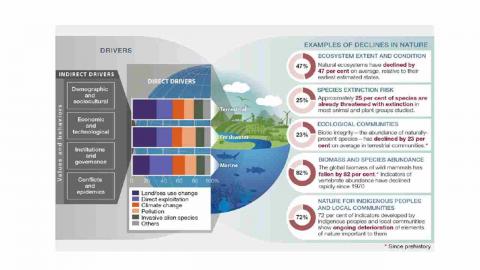
Intergovernmental Science-Policy Platform on Biodiversity and Ecosystem Services (IPBES): Global assessment report on biodiversity and ecosystem services.
The most recent IPBES global biodiversity assessment was approved at the 7th session of the IPBES plenary held on the 4th May 2019.
In addition to being an assessment on global biodiversity and ecosystem services, this summary report is to assist policy makers. A full report is to be released in the future which will provide more details on Oceania and Australia.
This summary only provides a global perspective on biodiversity and ecosystem services.
Key Points
A. Of the 4 million species assessed ~ 1 million species (25%) face extinction, many within decades, unless action taken to reduce intensity of drivers of biodiversity loss.

B. Changes in land and sea use are the direct drivers of biodiversity decline. Approximately 75% of land and about 66% of marine environments have been significantly altered by human actions. These trends have been less severe or avoided in areas held or managed by Indigenous Peoples and Local Communities. Other key direct drivers of biodiversity loss in descending order include:
1) direct exploitation of organisms
2) climate change
3) pollution
4) invasive alien species
Indirect drivers include increased human population, per capita consumption and technological innovation (resource use and global trade).
C. Goals for conserving and sustainably using nature and achieving sustainability within the Sustainable Development Goals framework cannot be met by current trajectories (see Table 3). Beyond 2030, goals may only be achieved through transformative changes across economic, social, political and technological factors.
D. Negative trends in nature will continue to 2050 and beyond in all policy scenarios explored in the report, except for those that include transformative change.

Opportunities for Action and Transformative Change
The five main interventions that can generate transformative change by tackling the underlying indirect drivers of deterioration include;
- Develop incentives and capacity for environmental responsibility and eliminating perverse incentives.
- Reforming sectoral and segmented decision-making to promote integration (cross-sectoral cooperation).
- Pre-emptive action to regulate, mitigate and remedy the deterioration of nature, and monitoring their outcomes.
- Decision-making in the context of resilience and uncertainty.
- Strengthen environmental laws and policies and their implementation, and the rule of law more generally.
Key Leverage Points (where efforts yield exceptionally large effects)
- Enabling visions for good quality of life that do not entail ever-increasing material consumption.
- Lowering total consumption and waste, by addressing both population growth and per capital consumption.
- Unleashing existing widely held values of responsibility to include impacts associated with sustainability, especially extending notions of responsibility to include impacts associated with consumption.
- Addressing inequalities, especially regarding income and gender which undermine capacity for sustainability.
- Ensuring inclusive decision making, fair and equitable sharing of benefits arising from the use of and adherence to human rights and conservation decisions.
- Accounting for nature deterioration from local economic activities and socio-economic-environmental interactions over distances, including for example, international trade (teleconnections).
- Ensure environmentally friendly technological and social innovation, considering potential rebound effects and investment regimes.
- Promoting education, generation and maintenance of different knowledge systems, including sciences, indigenous and local knowledge regarding nature, conservation and its sustainable use.

